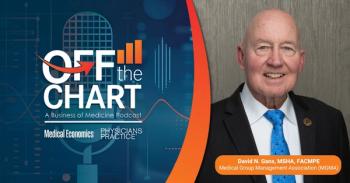
A To-Do List for Medical Practice Compliance Officers
Every medical practice should have a compliance officer. Here are 15 tasks to assign this important individual.
An effective compliance program should encompass all areas of regulation that are applicable to your practice. Many practices address billing and reimbursement and HIPAA compliance, but compliance programs also should cover employment, Occupational Safety and Health Administration (OSHA) requirements, Clinical Laboratory Improvement Amendments of 1998 (CLIA) regulations, the Employee Retirement Income Security Act requirements, and other healthcare regulatory areas, including self-referral/stark law and anti-kickback regulations. Every practice is unique, and so should be every compliance program.
A principle element of a compliance program is an effective and empowered compliance officer or compliance committee. If the practice designates a compliance committee, the compliance officer will be the chairperson and will coordinate the responsibilities between the members. The compliance officer’s two main responsibilities are (1) to develop and (2) to implement the practice's compliance program.
The compliance officer should have knowledge in many areas, including business administration, clinical activities, coding, billing, reimbursement, risk management, and at least a general knowledge of the laws and regulations applicable to the medical practice environment. The compliance officer should have good judgment, the ability to prioritize, and - to create the necessary culture - he should be respected, and considered to be approachable, by the other members of the practice.
Below is a list of responsibilities of the compliance officer and/or committee. This list can help your practice to develop a job description and focus on key requirements when recruiting a compliance officer. AAPC and the Health Care Compliance Association are two organizations that offer certifications for individuals who have proven competency through rigorous study and examination. Hiring a certified individual provides additional assurances that the individual understands and can apply key areas of compliance required to development and implement an effective program.
List of Responsibilities
1. The compliance officer will be responsible for development of the corporate compliance program. After the performance of a baseline assessment, the compliance officer will draft the formal compliance program documents.
2. The compliance officer will review all relevant documents, perform, and coordinate an organization-wide audit, and review all areas of possible noncompliance within the organization.
3. The compliance officer will distribute the written documentation of the compliance program.
4. The compliance officer will be responsible for periodically reviewing and updating the compliance program, and for dissemination of any changes to the employees and agents of the organization.
5. The compliance officer is responsible for developing, coordinating, and/conducting the necessary training programs for all members of the healthcare organization. The initial training will include complete education regarding the corporate compliance program.
6. The compliance officer will be responsible for auditing the training records that are to be maintained by the organization as an element of compliance.
7. The compliance officer will review/or coordinate the review of independent contractor arrangements to ensure that all of the applicable laws and regulations have been followed.
8. The compliance officer is responsible for the coordinating and/or screening of employees, agents, and independent contractors. This will involve making inquiries to the cumulative sanction report, and the U.S. Government Accountability Office debarred contractors listing.
9. The compliance officer is responsible for conducting and/or coordinating internal and external compliance audits. This is to ensure that all areas of the corporate compliance program are being adhered to. This will include audits of the human resources department; coding, billing, and reimbursement departments; laboratory (CLIA); and all areas of the practice that fall under the OSHA and HIPAA guidelines. The compliance officer will also coordinate and/or audit the training and reporting elements of all the regulatory compliance manuals.
10. The compliance officer will coordinate and/or develop policies and programs for reporting noncompliance issues. This will include developing a reporting system for all persons associated with the practice to utilize when necessary to inform the compliance officer of potential noncompliance issues.
11. The compliance officer will perform and/or coordinate all investigations of deficiencies resulting from the reporting system or identified through the periodic assessments.
12. The compliance officer will initiate and/or coordinate corrective and preventive action for areas of noncompliance as identified in the periodic audits and/or through the reporting system.
13. The compliance officer will be responsible for maintaining a file of all areas of the compliance plan. This will include documentation of the initial baseline audit, the periodic compliance audits, training of personnel and agents of the practice, results of screening of individuals, any reports of suspected or actual noncompliance, all reports of investigations, and all reports of corrective action taken after the investigation has been completed.
14. The compliance officer will report regularly to the owner(s), managing physician, and/or board of directors of the organization.
15. The compliance officer will develop a budget necessary to perform all of the compliance duties including items such as training for the staff, compliance officer, and compliance committee.
Newsletter
Optimize your practice with the Physicians Practice newsletter, offering management pearls, leadership tips, and business strategies tailored for practice administrators and physicians of any specialty.











